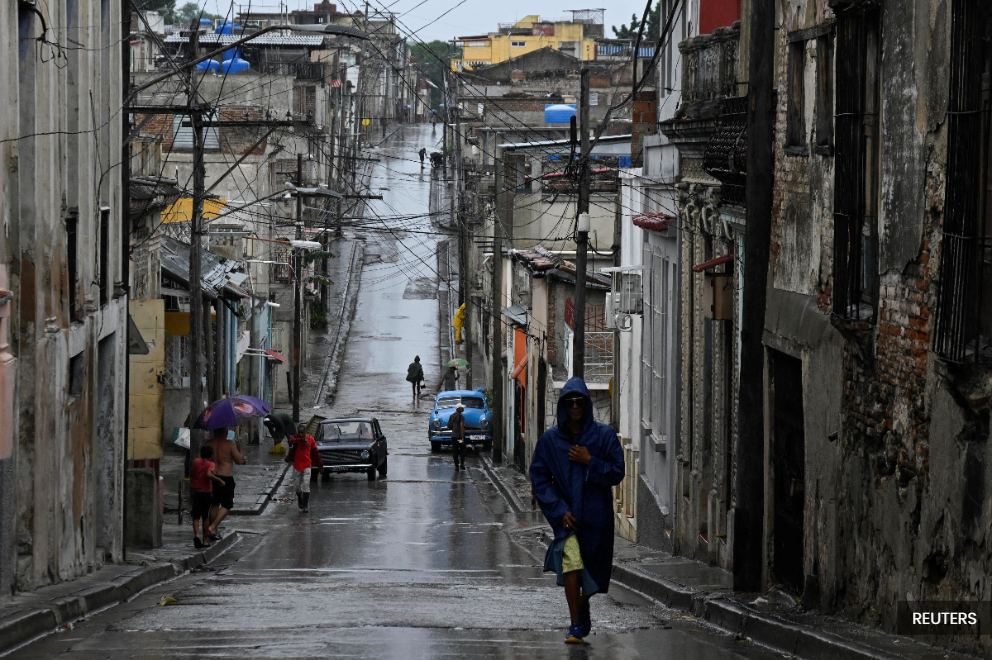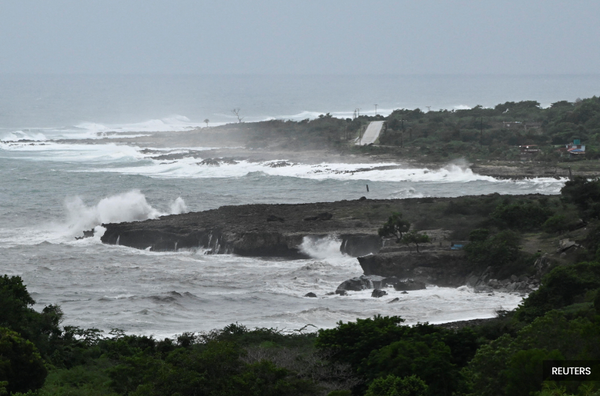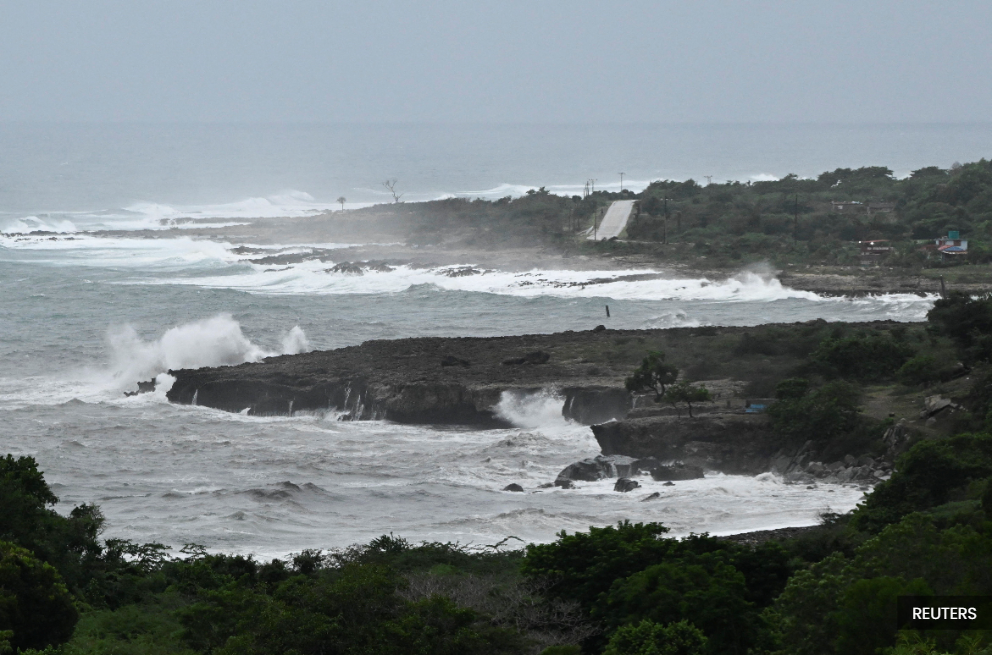HAVANA/KINGSTON, Oct 29 — Hurricane Melissa slammed into Cuba early on Wednesday, hours after causing devastation in neighbouring Jamaica as the strongest-ever storm on record to hit that Caribbean island nation.
According to the United States National Hurricane Centre, Melissa hit the southern coast of eastern Cuba with maximum sustained winds of 195 kilometres per hour (kph).
"Life-threatening storm surge, flash flooding and landslides, and damaging hurricane winds are ongoing this morning," it said.
Around 735,000 people were evacuated from their homes in eastern Cuba as the storm approached, authorities said. On Tuesday, Cuban President Miguel Díaz-Canel warned that the storm would cause "significant damage" and urged people to heed evacuation orders.
Melissa had weakened to a still-dangerous Category Three hurricane after roaring ashore near Jamaica's southwestern town of New Hope on Tuesday, packing sustained winds of up to 297 kph, well above the 252 kph threshold for Category Five, the highest level on the Saffir-Simpson hurricane scale.
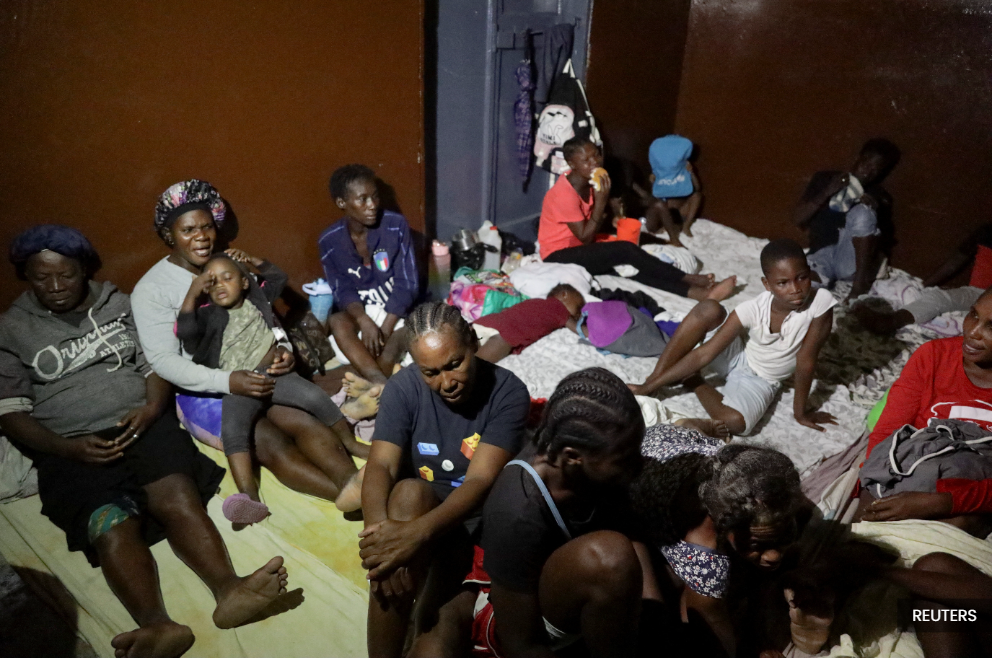
'Some loss of life expected,' Jamaican leader says
In southwestern Jamaica, the parish of St. Elizabeth was left "underwater," an official said, with more than 500,000 residents without power.
"The reports that we have had so far would include damage to hospitals, significant damage to residential property, housing and commercial property as well, and damage to our road infrastructure," Jamaican Prime Minister Andrew Holness said on CNN after the storm had passed.
He added that the government had not received news of any confirmed deaths from the storm, but given the strength of the hurricane and the extent of the damage, "we are expecting that there would be some loss of life."
As daylight returned to Jamaica early on Wednesday, eyewitness reports and videos on social media showed swaths of downed trees, washed-out roads, and roofs tossed about fields and roadways.
A video of the airport in Montego Bay showed flooded seating areas, broken glass, and collapsed ceilings.
Meteorologists at AccuWeather said Melissa ranked as the third-most-intense hurricane observed in the Caribbean, after Wilma in 2005 and Gilbert in 1988 — the last major storm to make landfall in Jamaica.
Scientists say hurricanes are intensifying faster and more frequently as a result of warming ocean waters driven by greenhouse gas emissions. Many Caribbean leaders have called on wealthy, heavy-polluting nations to provide reparations in the form of aid or debt relief to tropical island countries.
Melissa's winds subsided as the storm drifted past the mountains of Jamaica, lashing highland communities vulnerable to landslides and flooding.
Local media reported at least three deaths in Jamaica during storm preparations, and a disaster coordinator suffered a stroke at the onset of the storm and was rushed to the hospital. Late on Tuesday, many areas remained cut off.
"Our country has been ravaged by Hurricane Melissa, but we will rebuild and we will do so even better than before," Holness said early on Wednesday.
In the Bahamas, next after Cuba in Melissa's path to the northeast, the government ordered evacuations of residents in the southern portions of that archipelago.
Farther to the east, the island shared by Haiti and the Dominican Republic had faced days of torrential downpours leading to at least four deaths, authorities there said.
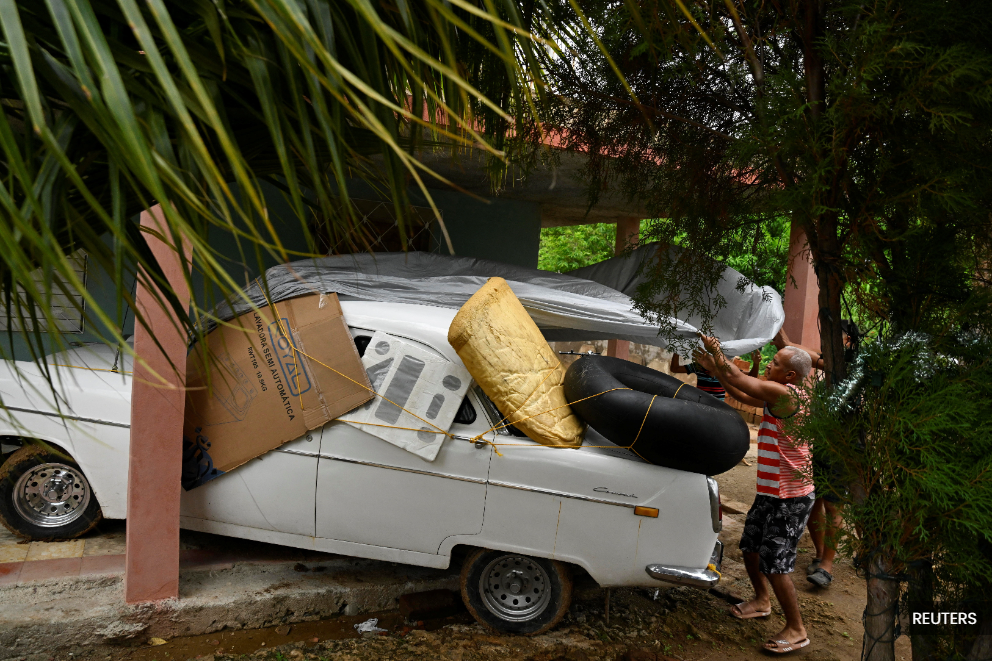
Cuba braces
The storm's centre, churning with violent wind gusts over 201 kph and heavy rain, slammed into Guama, a rural, mountainous area 25 miles west of Santiago de Cuba, the island's second-most-populous city.
The authorities had shut down power to virtually all of eastern Cuba, evacuated vulnerable areas, and had asked residents to shelter in place in the provincial capital Santiago, a city of 400,000 people.
Scarce videos posted by local media showed torrents of brown rainwater rushing down roads through dark towns at the base of Cuba's Sierra Maestra mountains, not far from the city.
The authorities reported widespread flooding of lowland areas early on Wednesday from Santiago to Guantanamo, where upwards of 35 per cent of the population had been evacuated.
The timing could not be worse for the communist-run Caribbean island. Cuba is already suffering from food, fuel, electricity, and medicine shortages that have complicated life for many, prompting record-breaking migration off the island since 2021.
President Diaz-Canel said Cuba had nonetheless mobilised 2,500 electric line workers to begin recovery immediately following the storm's passage across the island later on Wednesday.
The hurricane was not expected to directly affect the capital Havana.
